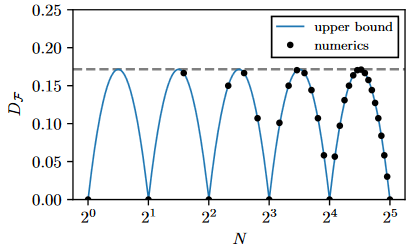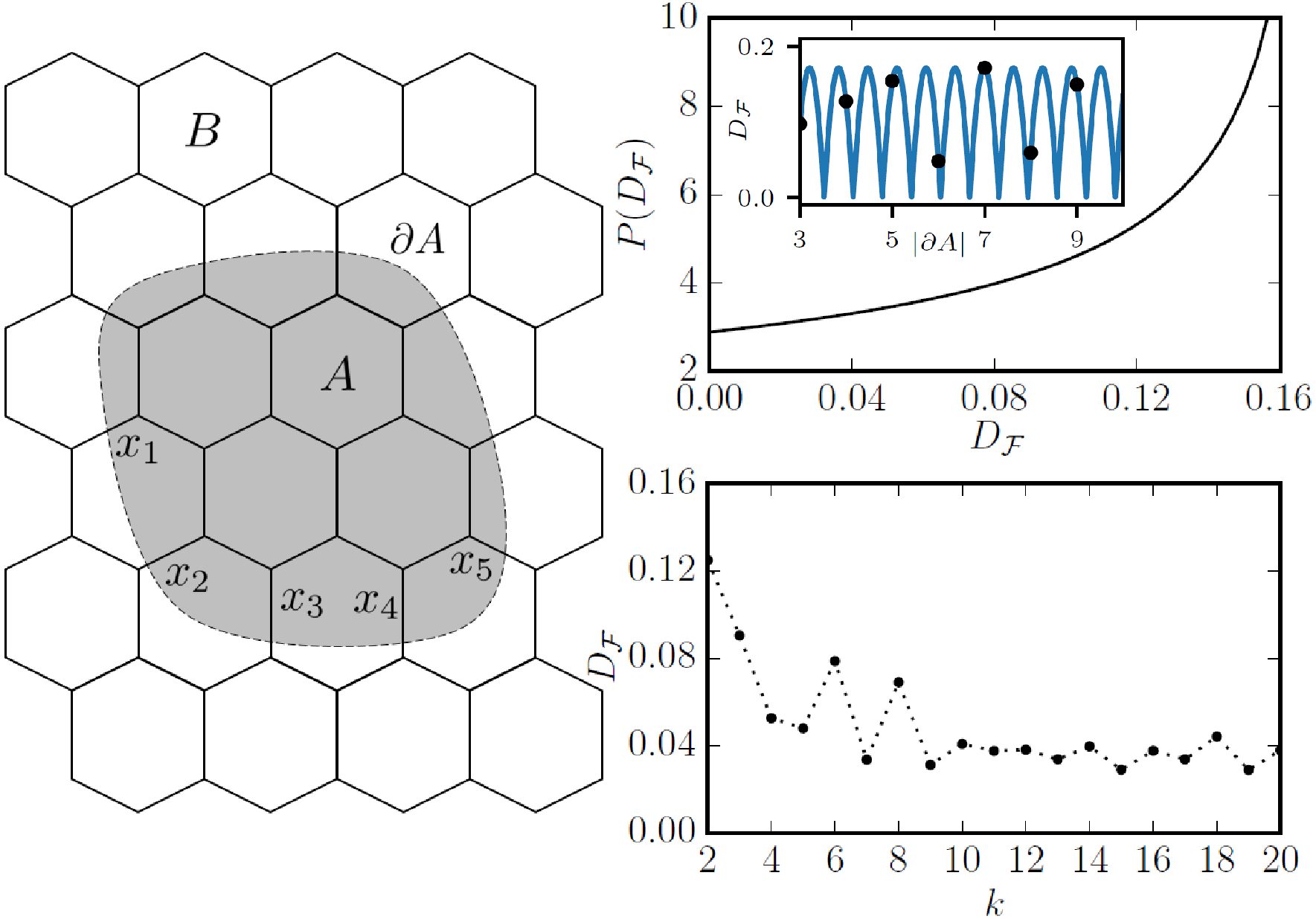String-Net Models
String-net models are 2D RG fixed-point models that support topological order and anyon excitations. The models are defined in terms of irreducible representations or `charges' of a finite group, ...
, that parametrise the edges of a honeycomb lattice. These charges obey the fusion rules
, where
is the multiplicity of each fusion outcome. For each charge,
, the quantum dimension
is defined that satisfies
. The models can be expressed with a stabilizer Hamiltonian, where
and
are vertex and plaquette stabilizers respectively.
The entanglement spectrum of a bipartition of the ground state of a string-net model into and
is given by
where is the total quantum dimension of the group and
is an element of the configuration,
, of charges at the boundary
, shown in the figure below (Left).
We initially consider string-nets defined with an Abelian group . These models have flat entanglement spectra for any bipartition with degeneracy
. Hence, the interaction distance
is directly determined from the upperbound for
as in the case of parafermion chains, shown again in the figure below.

The cases with can be exactly described by fermionic zero modes, giving
for any partition size. Hence, the ground states of these models are Gaussian states. This is a surprising result as anyonic quasiparticles are expected to emerge in interacting systems. For
we obtain the well known Toric Code. In the second paper we show the fermionisation of this model is given in terms of free lattice fermions coupled to a
gauge field.
For string nets with ,
is always non-zero. In particular, its value depends on the size
of the partition boundary. We investigate its behaviour by studying the distribution
of
by varying the size
of the boundary for a certain model
. This distribution can be shown to be given by
, which, surprisingly, is independent of
. Hence, there exist partitions that asymptotically maximise
for all
, as shown in the first figure (Right, Top). Therefore, all
Abelian string-nets either admit a free-fermion description for any partition or they form a class for which the manifestations of interactions are equivalent.
We next consider the non-Abelian string-net models. For concreteness, we take the finite group to be for various levels
. This group gives rise to string-net models that support a large class of non-Abelian anyons, such as the Ising anyons for
, with statistics similar to Majorana fermions, or the Fibonacci anyons for
, that are universal for quantum computation. For simplicity we consider the interaction distance for a single site partition that has
. We find that
for all
, as shown in the first figure (Right, Bottom). Hence, it is not possible to find a free fermion description of these non-Abelian string-net models.

